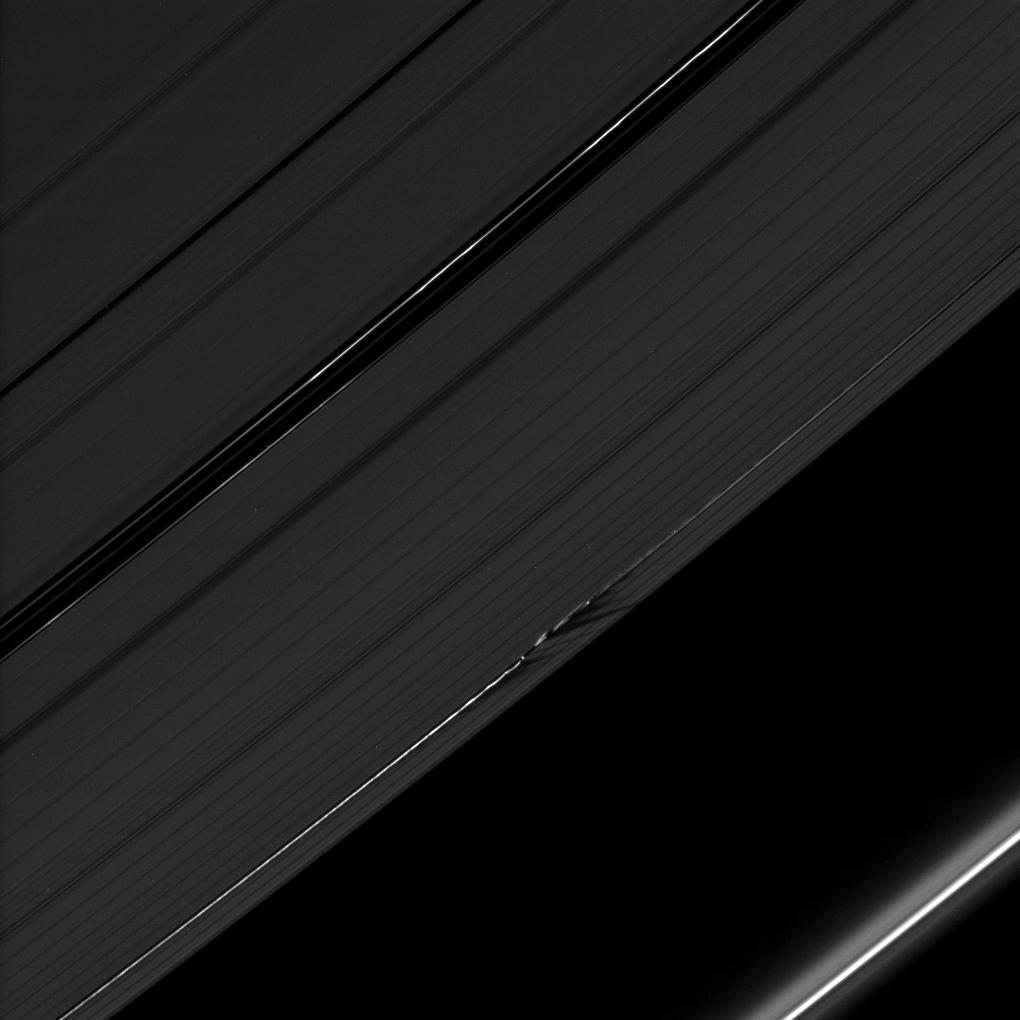Jagged Shadows

| PIA Number | PIA11600 |
|---|---|
| Language |
|
The shadows cast by Daphnis' attendant edge waves create a dark, jagged pattern on the A ring in this image taken as Saturn approached its August 2009 equinox.
Daphnis (8 kilometers, or 5 miles across) is a bright dot in the Keeler Gap of the A ring just below the center of the image. The moon has an inclined orbit, and its gravitational pull perturbs the orbits of the particles forming the Keeler Gap's edges and sculpts both edges into waves having both horizontal (radial) and out-of-plane components. Material on the inner edge of the gap orbits faster than the moon so that the waves there lead the moon in its orbit. Material on the outer edge moves slower than the moon, so waves there trail the moon. See Wavy Shadows to learn more about this process.
The novel illumination geometry that accompanies equinox lowers the sun's angle to the ringplane, significantly darkens the rings, and causes out-of-plane structures to look anomalously bright and cast shadows across the rings. These scenes are possible only during the few months before and after Saturn's equinox, which occurs only once in about 15 Earth years. Before and after equinox, Cassini's cameras have spotted not only the predictable shadows of some of Saturn's moons (see Across Resplendent Rings), but also the shadows of newly revealed vertical structures in the rings themselves (see A Small Find Near Equinox).
This view looks toward the northern, unilluminated side of the rings from about 36 degrees above the ringplane.
The image was taken in visible light with the Cassini spacecraft narrow-angle camera on July 28, 2009. The view was obtained at a distance of approximately 1 million kilometers (621,000 miles) from Daphnis. Image scale is 6 kilometers (4 miles) per pixel.
The Cassini-Huygens mission is a cooperative project of NASA, the European Space Agency and the Italian Space Agency. The Jet Propulsion Laboratory, a division of the California Institute of Technology in Pasadena, manages the mission for NASA's Science Mission Directorate, Washington, D.C. The Cassini orbiter and its two onboard cameras were designed, developed and assembled at JPL. The imaging operations center is based at the Space Science Institute in Boulder, Colo.
For more information about the Cassini-Huygens mission visit http://saturn.jpl.nasa.gov . The Cassini imaging team homepage is at http://ciclops.org .
Credit: NASA/JPL/Space Science Institute
